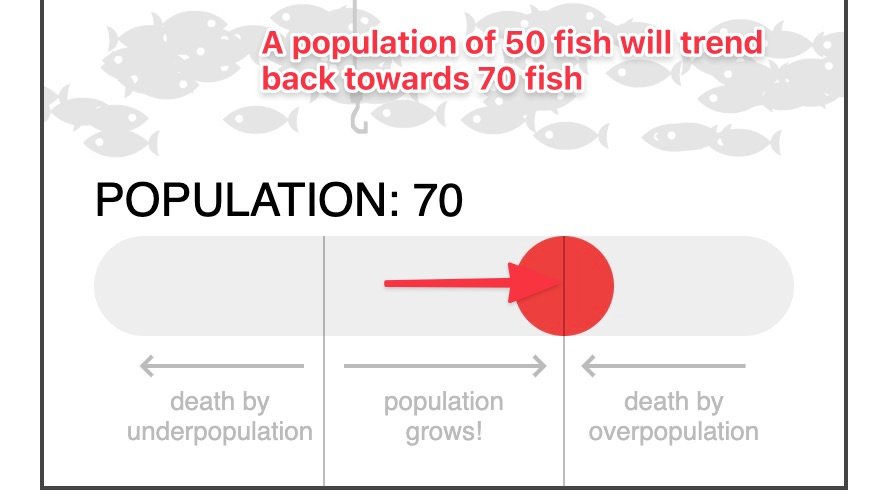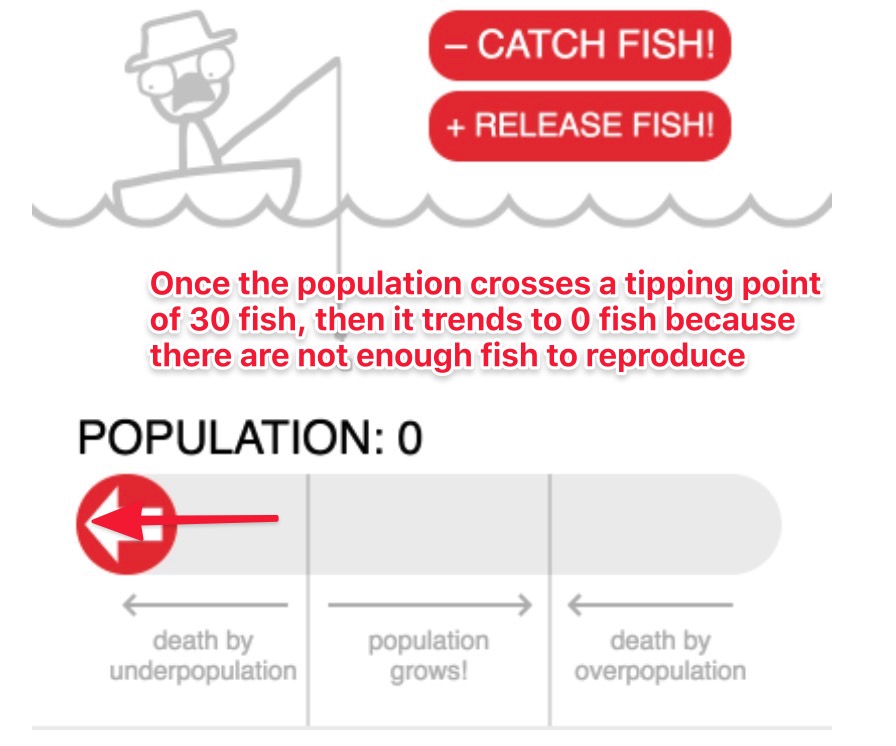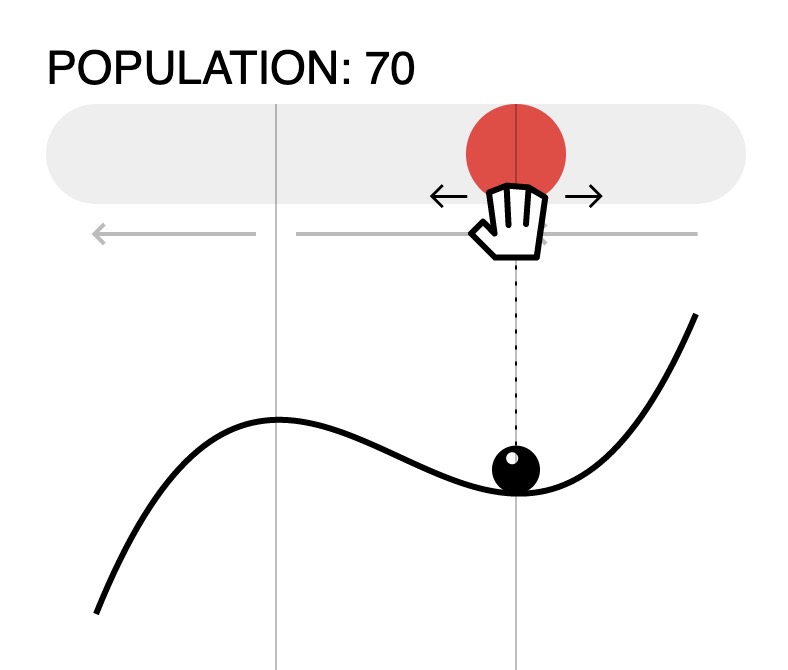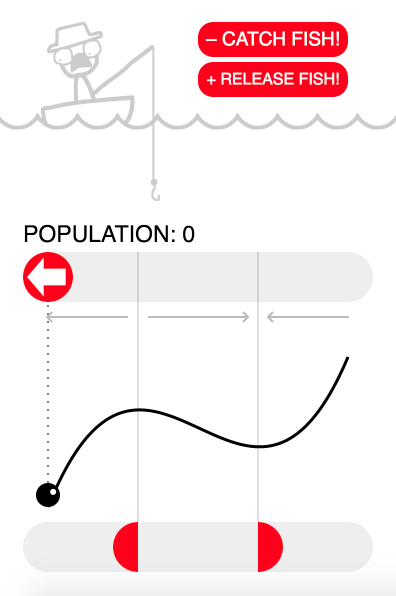Why do things often seem “stuck” until they change suddenly and dramatically?
An industry that has seen no innovation is suddenly upended. (E.g. Cabs-->Uber)
A peaceful movement fights for years, and nothing. Then, everything changes. (E.g. Arab Spring)
Why? https://abs.twimg.com/emoji/v2/... draggable="false" alt="🧵" title="Thread" aria-label="Emoji: Thread">
https://abs.twimg.com/emoji/v2/... draggable="false" alt="🧵" title="Thread" aria-label="Emoji: Thread"> https://abs.twimg.com/emoji/v2/... draggable="false" alt="👇" title="Rückhand Zeigefinger nach unten" aria-label="Emoji: Rückhand Zeigefinger nach unten">
https://abs.twimg.com/emoji/v2/... draggable="false" alt="👇" title="Rückhand Zeigefinger nach unten" aria-label="Emoji: Rückhand Zeigefinger nach unten">
An industry that has seen no innovation is suddenly upended. (E.g. Cabs-->Uber)
A peaceful movement fights for years, and nothing. Then, everything changes. (E.g. Arab Spring)
Why?
There’s a helpful framework from complexity science for understanding this phenomenon: attractor landscapes.
Attractor landscapes were originally used in physics but are broadly applicable to genetics, business, politics, and options trading among many other fields.
Let’s take a simple example: you’re fishing in a small pond.
Fish reproduce, so you catching fish won’t lead to them disappearing from the pond as long as you don’t catch too many, too fast.
Fish reproduce, so you catching fish won’t lead to them disappearing from the pond as long as you don’t catch too many, too fast.
However, beyond some level, fish will die from overpopulation as there isn’t enough food for them to feed on.
And, below some threshold, fish are too sparse and can’t find a mate to reproduce so they die out.
And, below some threshold, fish are too sparse and can’t find a mate to reproduce so they die out.
We can represent this with a spectrum like the one below where the arrows represent the natural tendency of the fish population.
In this example, the fish population has two attractor points: seventy (70) fish and zero (0) fish.
Without fishing, the natural population hovers around 70.
Without fishing, the natural population hovers around 70.
If you start catching fish then there will be fewer fish and more food.
That means each fish so they will have plenty to eat so that they are healthy and reproduce.
That means each fish so they will have plenty to eat so that they are healthy and reproduce.
So if you catch ten fish one week and then take a week off, the population will trend back towards 70.
Similarly, if you don& #39;t fish at all and the fish reproduce too much then overpopulation will cause there to be not enough food and so some fish will die out and the population will trend back towards a population of 70.
This makes the population of 70 an attractor point.
This makes the population of 70 an attractor point.
However, if you catch too many fish, too quickly then you pass a tipping point. In this model, once there are less than 30 fish, the fish won’t be able to reproduce and survive and the fish population will die out.
If you stop fishing at 31 fish then the population will slowly recover to it& #39;s attractor point of 70 as the fish have plenty of food and are able to produce new little fishies.
However, At 29 fish, the tipping point has been crossed and there’s no going back.
A process that starts out very gradual as you approach 30 fish, suddenly changes in a very sharp and not so great way.
A process that starts out very gradual as you approach 30 fish, suddenly changes in a very sharp and not so great way.
Metaphorically, the population of fish behaves like a ball rolling down a series of hills. As long as you are within the valley, the population tends to “roll” back towards 70.
Once you cross the mountain though, it can roll all the way down the other side to zero just as easily.
This is a pretty unintuitive phenomenon and you can often see people misunderstanding it.
Can you imagine the public debates where there is an "unlimited fishing camp" and a "restricted fishing camp?"
Can you imagine the public debates where there is an "unlimited fishing camp" and a "restricted fishing camp?"
The "restricted fishing camp" would be trying to explain that if there is too much overfishing then the pond will go barren and there will be no more fishing.
The "unlimited fishing camp" will point to years of historical data: "These restricted fishing people are just fear-mongering, the fish population has always rebounded in the past!"
This example is much simpler than real complex systems because no one knows where the tipping points actually are in real life.
However, Attractor landscapes are still a useful mental model for thinking about lots of complex systems where feedback loops can drive systems far out of equilibrium.
This ranges political forces like the Arab Spring to financial market crashes like what we saw in March of 2020.
Everything seems quiet for a long time until some precipitating event causes a tipping point to occur as COVID-19 did in March.
Everything seems quiet for a long time until some precipitating event causes a tipping point to occur as COVID-19 did in March.
Two big takeaways I have from better understanding attractor landscapes:
First, just because the past has been characterized by stability or low volatility, does not mean the system is impervious to change.
It may just mean that we have not yet reached the tipping point.
First, just because the past has been characterized by stability or low volatility, does not mean the system is impervious to change.
It may just mean that we have not yet reached the tipping point.
Second, for systems where the cost of passing a tipping point can be catastrophic (e.g. a nuclear power plant reactor or your life savings), you want to paint a pretty wide margin of safety and make sure you aren& #39;t anywhere near the tipping point.
All images are from Nicky Case& #39;s wonderful interactive post on attractor landscapes: https://ncase.me/attractors/ ">https://ncase.me/attractor... Highly recommended!
If you enjoyed this summary, you can get similar content on my newsletter: https://taylorpearson.me/newsletter ">https://taylorpearson.me/newslette...
If you enjoyed this summary, you can get similar content on my newsletter: https://taylorpearson.me/newsletter ">https://taylorpearson.me/newslette...

 Read on Twitter
Read on Twitter https://abs.twimg.com/emoji/v2/... draggable="false" alt="👇" title="Rückhand Zeigefinger nach unten" aria-label="Emoji: Rückhand Zeigefinger nach unten">" title="Why do things often seem “stuck” until they change suddenly and dramatically? An industry that has seen no innovation is suddenly upended. (E.g. Cabs-->Uber)A peaceful movement fights for years, and nothing. Then, everything changes. (E.g. Arab Spring)Why? https://abs.twimg.com/emoji/v2/... draggable="false" alt="🧵" title="Thread" aria-label="Emoji: Thread">https://abs.twimg.com/emoji/v2/... draggable="false" alt="👇" title="Rückhand Zeigefinger nach unten" aria-label="Emoji: Rückhand Zeigefinger nach unten">" class="img-responsive" style="max-width:100%;"/>
https://abs.twimg.com/emoji/v2/... draggable="false" alt="👇" title="Rückhand Zeigefinger nach unten" aria-label="Emoji: Rückhand Zeigefinger nach unten">" title="Why do things often seem “stuck” until they change suddenly and dramatically? An industry that has seen no innovation is suddenly upended. (E.g. Cabs-->Uber)A peaceful movement fights for years, and nothing. Then, everything changes. (E.g. Arab Spring)Why? https://abs.twimg.com/emoji/v2/... draggable="false" alt="🧵" title="Thread" aria-label="Emoji: Thread">https://abs.twimg.com/emoji/v2/... draggable="false" alt="👇" title="Rückhand Zeigefinger nach unten" aria-label="Emoji: Rückhand Zeigefinger nach unten">" class="img-responsive" style="max-width:100%;"/>








